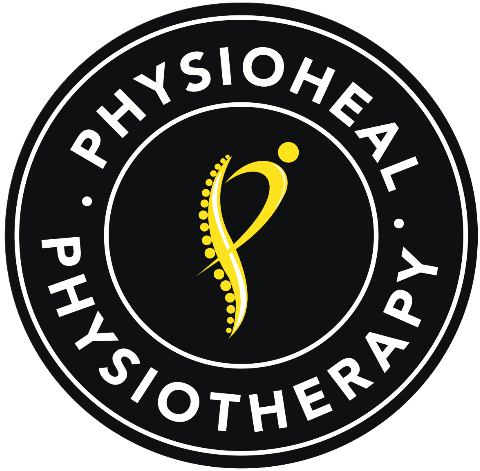
Neck pain, often referred to as NP, is a common ailment that can significantly affect your daily life. It’s important to understand the different aspects of neck pain, its causes, and how physiotherapy can provide effective relief. At Physioheal Physiotherapy, we specialize in treating neck pain and offer comprehensive solutions to address this discomfort.
Understanding Neck Pain
Neck pain can manifest in various forms, but the most commonly reported type is non-specific or mechanical neck pain. This type of neck pain is characterized by symptoms of a non-specific nature or a mechanical basis. It can encompass muscle pain, muscle spasm, headaches, facet joint pain, nerve pain, referred pain, and bone pain.
Neck pain is a prevalent issue worldwide, with approximately two-thirds of people experiencing it at some point in their lives. While the prevalence of neck pain varies across studies, it’s estimated that 7.6% of individuals experience neck pain at any given time, and 48.5% experience it at some point in their lifetime. Studies suggest that neck pain is more common among women, individuals with anxiety or depression, and those who work in office settings with poor ergonomic conditions.
Causes of Neck Pain
The neck plays a crucial role in supporting the weight of the head and facilitating essential movements like rotation, flexion, extension, and lateral flexion. However, it is susceptible to various conditions that can cause pain and restrict motion. Some common contributors to neck pain include:
- Muscle Strains: Overuse of neck muscles, often resulting from poor posture, can lead to muscle strains and discomfort.
- Weakness: Imbalances in muscle development, such as overstimulation of the upper traps compared to the lower and mid traps, can contribute to neck pain.
- Worn Joints: With aging, the joints in the neck can deteriorate due to conditions like osteoarthritis, resulting in reduced range of motion and pain.
- Nerve Compression: Conditions like herniated disks or osteophytes in the neck’s vertebrae can exert pressure on nerves, causing pain.
- Injuries: Motor vehicle accidents and sports injuries, such as whiplash, can strain the soft tissues of the neck.
- Diseases: Certain medical conditions like rheumatoid arthritis, meningitis, or cancer can also lead to neck pain.
Classifying Neck Pain
Clinicians use specific criteria to classify neck pain based on clinical findings. These findings include limitation of motion in the cervical and upper thoracic regions, the presence of cervical pain-related headaches, a history of trauma, and referred or radiating pain into an upper extremity. These criteria help categorize patients with neck pain into the following categories:
- Neck pain with mobility deficits
- Central and/or unilateral neck pain
- Limitation in neck motion consistently reproducing symptoms
- Associated (referred) shoulder girdle or upper extremity pain may be present
- Limited cervical range of motion
- Neck pain reproduced at end ranges of active and passive motions
- Restricted cervical and thoracic segmental mobility
- Neck pain with movement coordination impairments
- Mechanism of onset linked to trauma or whiplash
- Associated (referred) shoulder girdle or upper extremity pain
- Associated varied nonspecific concussive signs and symptoms
- Dizziness/nausea
- Headache, concentration, or memory difficulties; confusion; hypersensitivity to mechanical, thermal, acoustic, odor, or light stimuli; heightened affective distress
- Positive craniocervical flexion test
- Positive neck flexor muscle endurance test
- Neck pain with headaches
- Non-continuous, unilateral neck pain and associated (referred) headache
- Headache precipitated or aggravated by neck movements or sustained positions/postures
- Positive cervical flexion rotation test
- Headache reproduced with provocation of the involved upper cervical segments
- Limited cervical range of motion
- Restricted upper cervical segmental mobility
- Neck pain with radiating pain
- Neck pain with radiating (narrow band of lancinating) pain in the involved extremity
- Upper extremity dermatomal paresthesia or numbness and myotomal muscle weakness
- Neck and neck-related radiating pain reproduced or relieved with radiculopathy testing: positive test cluster includes upper-limb nerve mobility, Spurling’s test, cervical distraction, cervical range of motion
- May have upper extremity sensory, strength, or reflex deficits associated with the involved nerve roots
Physiotherapy for Neck Pain
Physiotherapy is a cornerstone of neck pain management. Our physiotherapists in Gurgaon at Physioheal specialize in developing tailored treatment plans to address neck pain and its underlying causes. Our approach involves a combination of hands-on techniques, exercises, and holistic care.
- Assessment and Customized Treatment : Our experienced physiotherapists conduct a thorough assessment to understand the nature and underlying factors contributing to your neck pain. Based on this assessment, they create a personalized treatment plan tailored to your unique needs.
- Hands-On Techniques : Physiotherapy for neck pain often includes hands-on techniques to alleviate muscle tension, improve joint mobility, and reduce pain. Our physiotherapists use manual therapy to target specific areas of discomfort and enhance your overall mobility.
- Exercise Programs: We design comprehensive exercise programs to strengthen the muscles in your neck and improve posture. These exercises are tailored to your specific needs and gradually progress as you recover.
- Acupuncture and Holistic Care : At Physioheal, we offer holistic care for neck pain relief. This may include acupuncture, which can help reduce pain and promote relaxation, complementing other treatment modalities.
- Education and Prevention: Our physiotherapists provide valuable education on proper ergonomics, posture, and self-care techniques to prevent future neck pain episodes. We empower you with the knowledge to maintain a healthy neck and prevent recurrence.
When it comes to managing neck pain, physical therapy offers two common approaches tailored to your needs:
- Passive Physical Therapy: Passive physical therapy involves treatments where the patient doesn’t exert effort. This approach aims to alleviate pain and reduce swelling, and it includes various methods such as:
- Heat and Cold Therapy: Applying ice or cold packs can help reduce pain and inflammation, while heat packs increase blood flow and relax stiff neck muscles. In some cases, alternating between heat and cold therapy can be beneficial, depending on the patient’s injury or preferences.
- Massage Therapy: A soothing massage can effectively loosen and relax muscles, providing relief from pain and stiffness. During neck pain treatment, the therapist may focus on massaging the back of the neck and surrounding areas, including the back of the head, shoulders, and upper back.
- Electrotherapy: This technique involves using a device to deliver a gentle electrical current through wires to the painful or injured area. Electrotherapy serves various purposes, such as modifying pain signals, stimulating muscle contractions, promoting tissue healing, and delivering pain relief medication through the skin (iontophoresis). For neck pain, a common form of electrotherapy is transcutaneous electrical nerve stimulation (TENS), which sends electrical pulses to the sensory nerves beneath the skin, helping to alter pain sensations for improved comfort.
- Ultrasound: During ultrasound therapy, a cool gel is applied to the painful or swollen neck area. A handheld device then gently administers high-energy soundwaves beneath the skin’s surface, targeting the affected tissues. Many individuals find that ultrasound therapy provides a soothing warmth that relaxes muscles and reduces pain.
- Active Physical Therapy: Active physical therapy involves the patient actively participating in exercises and stretches to enhance neck muscle strength, flexibility, and posture. This approach reduces discomfort and minimizes stress on the cervical spine. Here are some components of active physical therapy for neck pain:
- Neck Stretches and Exercises: Your therapist may prescribe a variety of stretches and exercises to specifically target the muscles connected to the cervical spine. A common exercise is the chin tuck, where you gently pull your chin straight back while looking forward (not up or down).
- Core and Back Strengthening: Improving neck strength often goes hand-in-hand with strengthening the back and core muscles surrounding the trunk. These muscle groups collaborate to support the spine and enhance posture.
- Aerobic Activities: Engaging in low-impact aerobic activities can elevate blood flow and promote better breathing. These activities don’t put undue stress on the spine and may include cycling on an upright or reclined bike, swimming with proper neck protection, and brisk walking.
- Aquatic Exercise: Some exercises can be performed in a pool, leveraging the water’s buoyancy to reduce spine pressure while enabling muscle engagement. For individuals experiencing severe neck pain or accompanying shoulder and back discomfort, aquatic exercise may be recommended.
Incorporating these physical therapy methods can help you effectively manage and alleviate neck pain while enhancing your overall neck health.
Benefits of Physical Therapy
Physical therapy for neck pain offers numerous benefits, including:
- Pain Reduction: Through targeted treatments and exercises, you’ll experience a reduction in pain and discomfort.
- Improved Mobility: Your neck’s range of motion will gradually improve, allowing for smoother, pain-free movement.
- Enhanced Strength: Strengthening exercises will enhance your neck’s stability, reducing the risk of future pain.
- Long-Term Relief: Physiotherapy addresses the root causes of neck pain, providing lasting relief and preventing recurrence.
Book Your Appointment Today!
If you’re looking for the best physiotherapy in Gurgaon to address your neck pain, choose Physioheal Physiotherapy. Our clinic is led by Dr. Divya Gaur, a renowned physiotherapist who combines expertise with a holistic approach to ensure the best possible outcomes for each patient.
Don’t let neck pain hinder your daily life. Take the first step toward relief by scheduling an appointment at Physioheal Physiotherapy in Gurgaon. Contact us at +91-9999259307 or conveniently book your appointment online. Regain comfort, mobility, and your quality of life with Gurgaon’s leading physiotherapy center.
